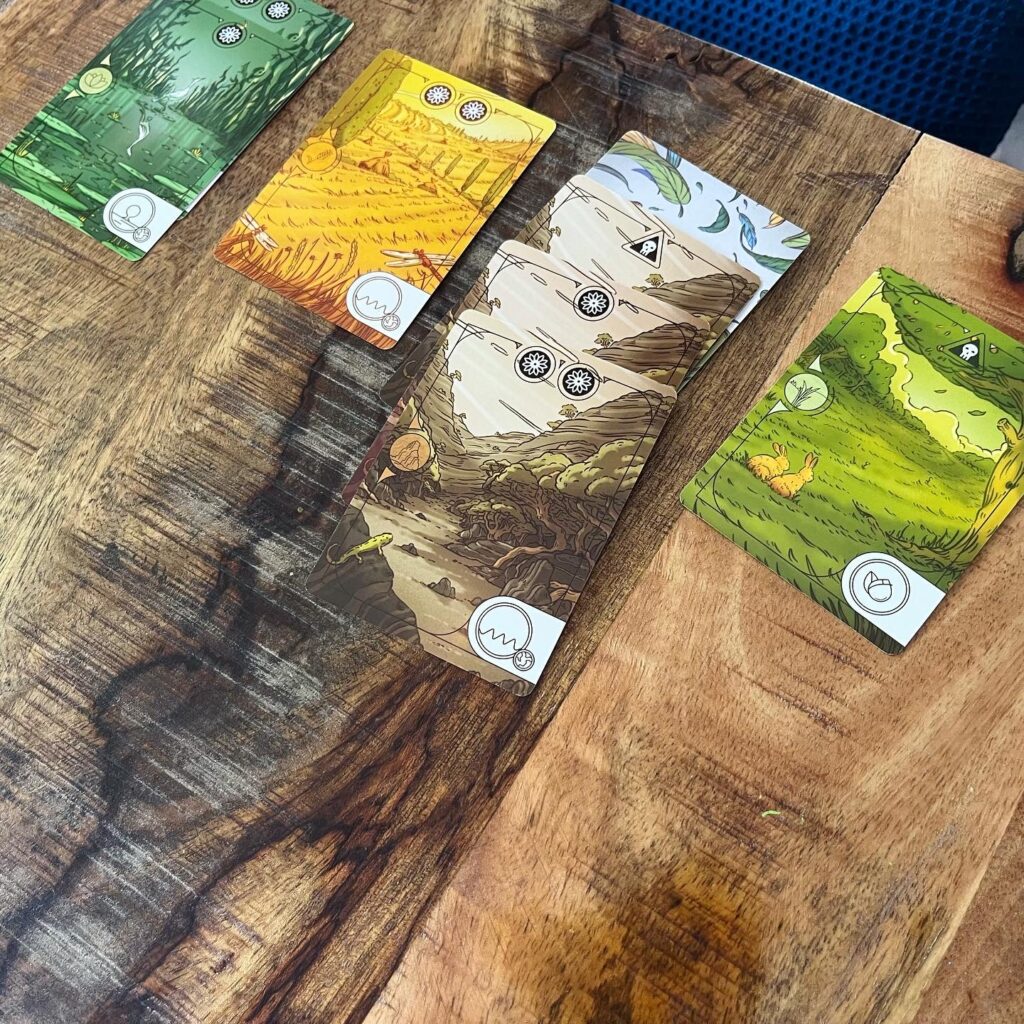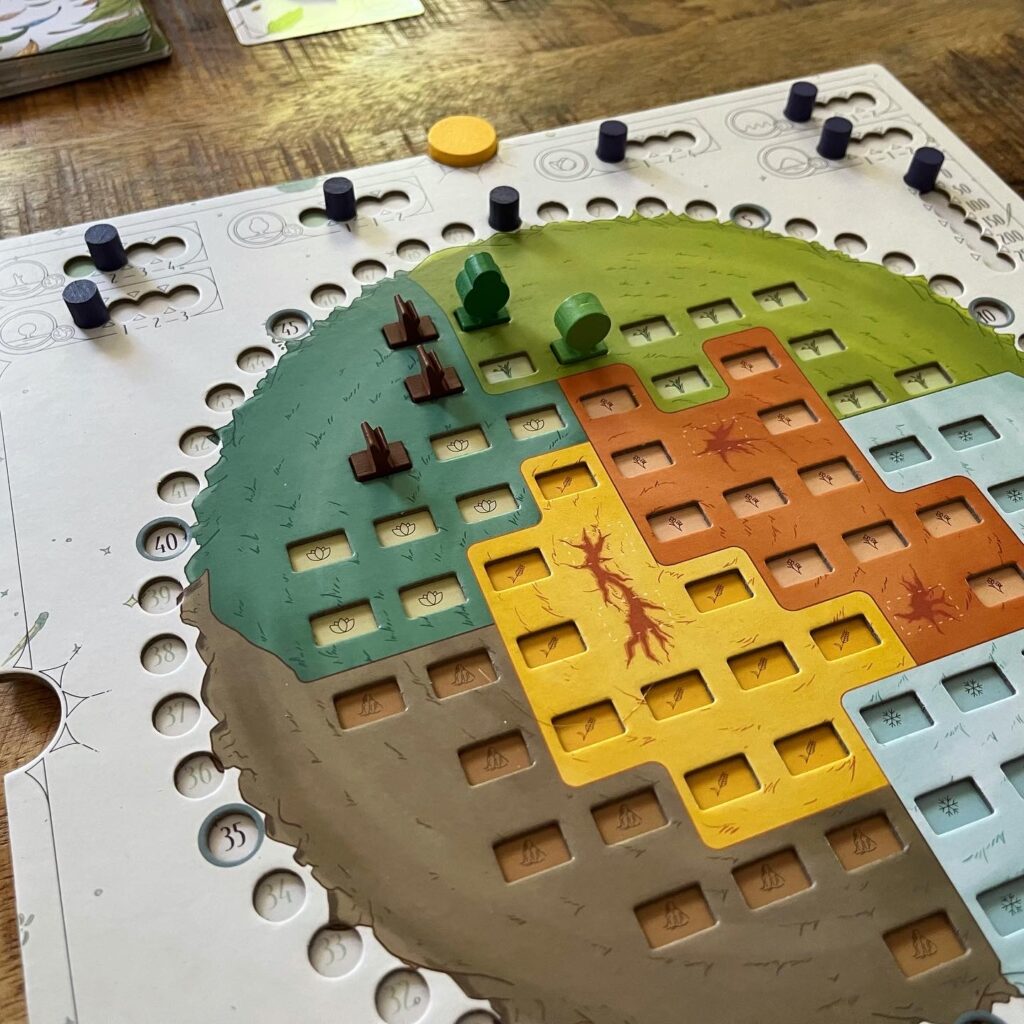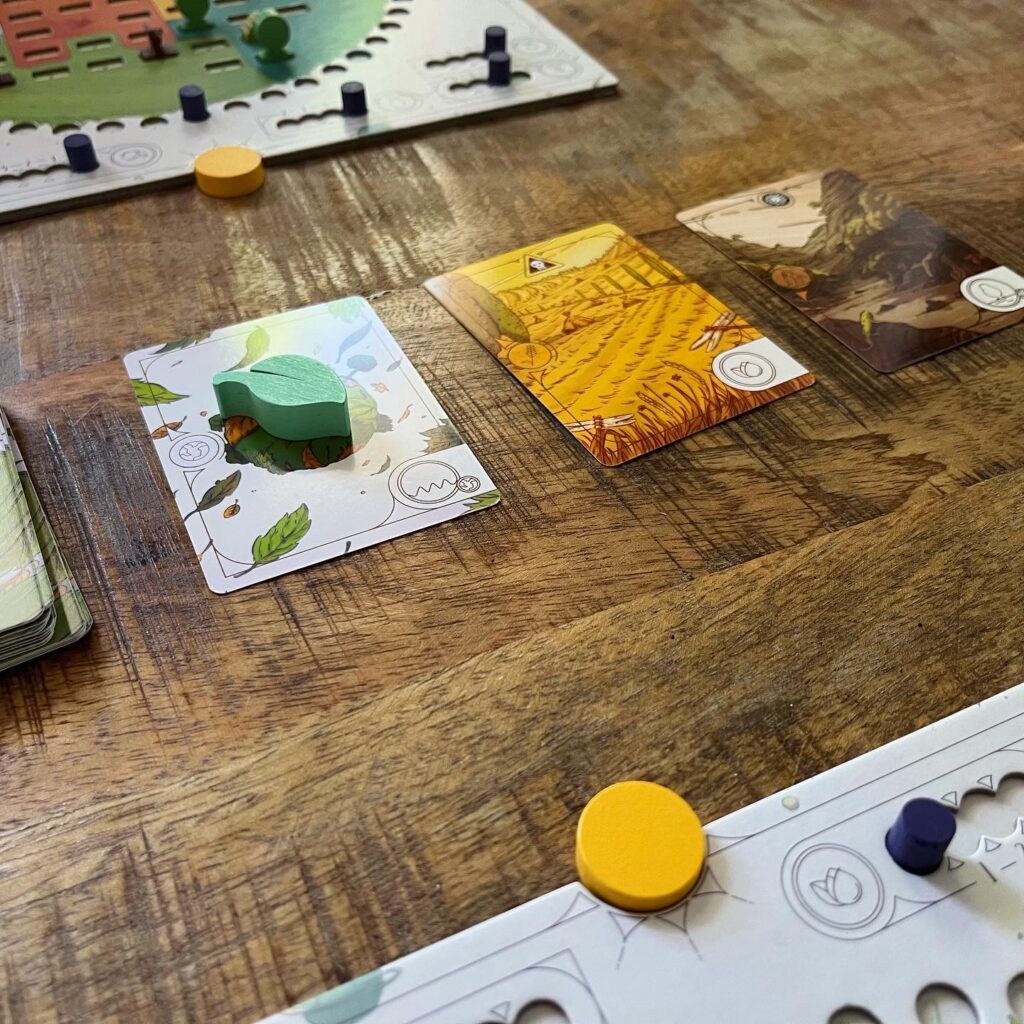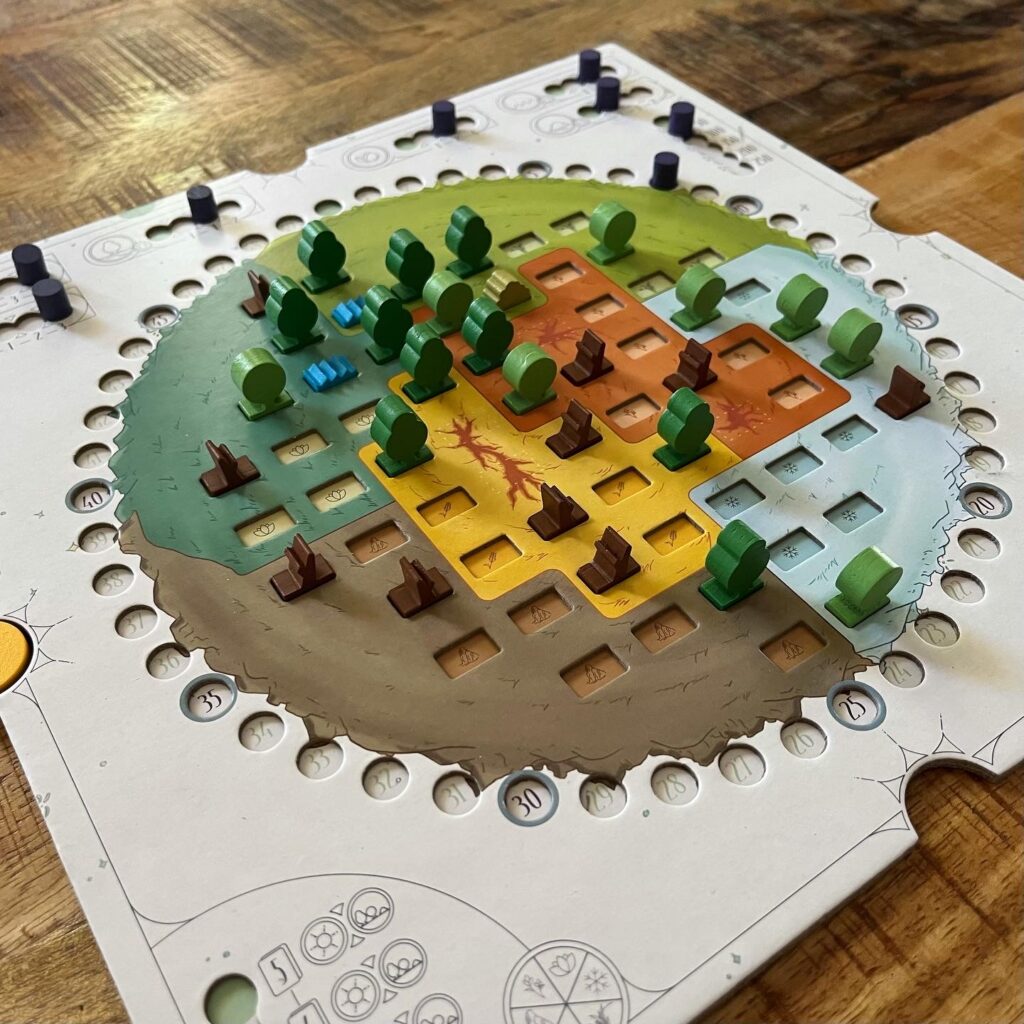There is no planet B, but … what if humanity were given a second chance to create a suitable planet! The planet should be green, fertile and efficient. We hereby impose this task to the players of Evergreen. Does this game live up to its title or is it rather barren and dry?
Setup
At the beginning of a game of Evergreen, each player is given one of the planets. Above their planet (or at another location if players have agreed), players place their sun. On all relevant notches (for properties, points, and round counting) players place purple cylinders.

Players shuffle the deck of cards and draw cards until 5 fertility symbols are visible. The cards with fertility symbols are set aside and the remaining cards are shuffled back into the draw pile. Then put open as many cards as the amount of players + 1. A random player becomes the starting player (or maybe something playful such as the biggest polluter) and give this player the wooden leaf.
Gameplay
There are 4 seasons and each season consists of a number of (descending) rounds. Each round, starting with the aptly named ‘starting player’, players take turns choosing one of the cards turned face up. The color of the cards correspond to the different biomes on the players’ planets, and each card also contains the symbol of a trait that players can apply. There are also wild cards, which can be used for any biome. When a starting player has chosen a card, they also place the leaf on one of the remaining cards so that (possibly) another player will be a starting player the next round.
After all players have picked a card, they start performing actions and properties. Players may decide whether to perform their action or trait first.
There are four possible actions. Players can place 3 sprouts on fields of the same biome as the chosen card. Players can perform 2 growth actions (sprout to small tree or small tree to large tree) on 2 different fields in the same biome as the chosen card. Players can also, as a third possible action, place a sprout and also perform a growth action on the relevant biome. As a fourth and final possible action, a player can place a growth action or sprout action on a field on a biome of their choice (so not necessarily from the chosen card).



Traits are at the top of the player board (the planet). A player moves the marker on the relevant trait and can perform the corresponding action as many times as indicated below the marker. With these actions, players can sprout and grow, as well as earn points and place bushes or build lakes. With bushes, players can enlarge their forest without placing trees (and thus with less shade, more about this later). Placing lakes allows players to grow two adjacent fields.
At the end of a round, the remaining card is discarded on the fertility area. This may add new fertility symbols (for possible points at the end of the game). With drought symbols, previously placed cards are removed from this area.
A season is over when enough rounds have been played, and at the end of a season scoring will commence. Players receive points for all trees facing the sun, but some trees overshadow other trees. Large forests might cast a lot of shadows but large forests also score points. At the end of the game (after season 4) players also receive points for all their large trees in specific biomes depending on the amount of fertility symbols for that biome in the fertility area. The player with the most points wins.
Verdict
Evergreen may rightly become an evergreen title in my opinion. By evergreen we mean a title that does not leave the assortment of a publisher. Evergreen is beautifully designed, contains beautiful illustrations and fantastic small wooden parts that all contribute to a pleasurable gaming experience.
What also contributes to the enjoyable gaming experience is a simple and concise and natural gameplay flow that, due to the ample choices, with naturally limited types of different kinds of actions and sufficient freedom in tactics and approach, provides a strategic package that is understandable for less experienced players, but offers enough variety and challenge for the frequent player.


Evergreen, because of its theme and clear gameplay, is a fairly convivial game. However, this conviviality, because of the mechanism whereby players must choose cards, there is also plenty of interaction between players. Indeed, players can choose cards that their opponent may have desperately needed and by not choosing certain cards, players influence the fertility and final scoring. This confrontation is largely indirect though, so lovable players can rejoice that you won’t thwart each other as much as in the Photosynthesis game by the same designers. Incidentally, it is not irrelevant to name that game, as the way trees earn points and cast shadows is clearly inspired by this earlier game. Evergreen, however, is a lot more streamlined and less laborious. All in all, an sustainable recommendation.



